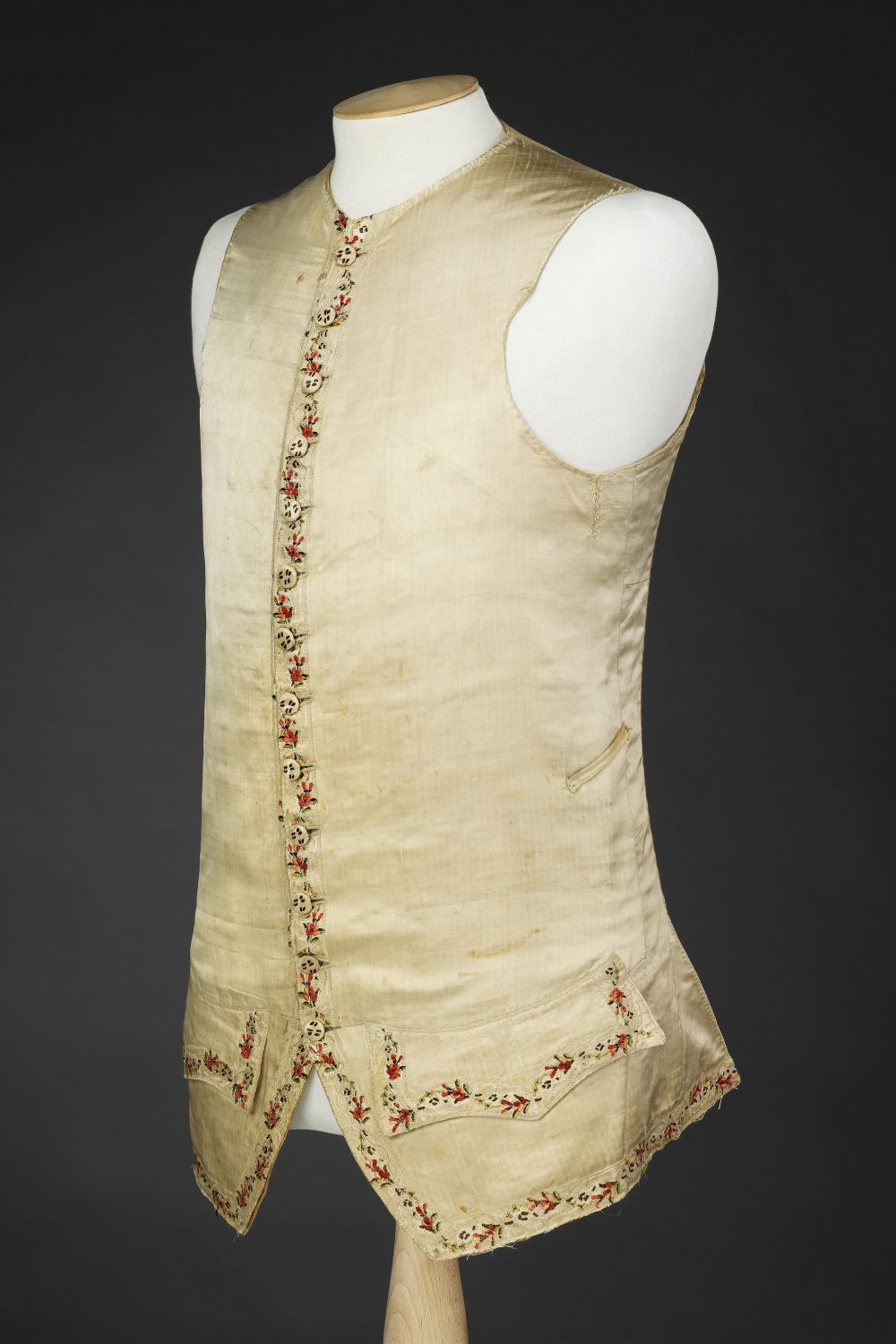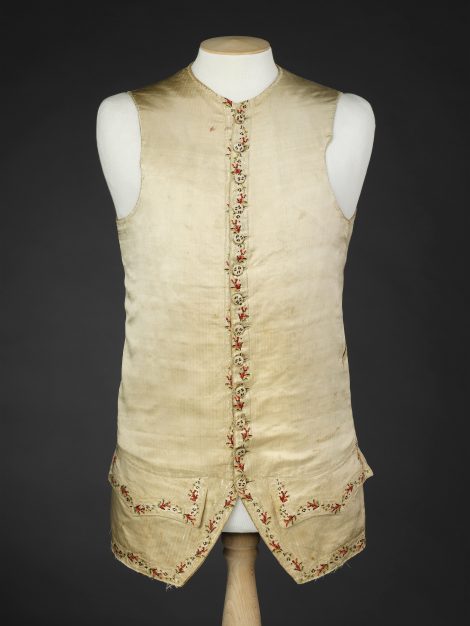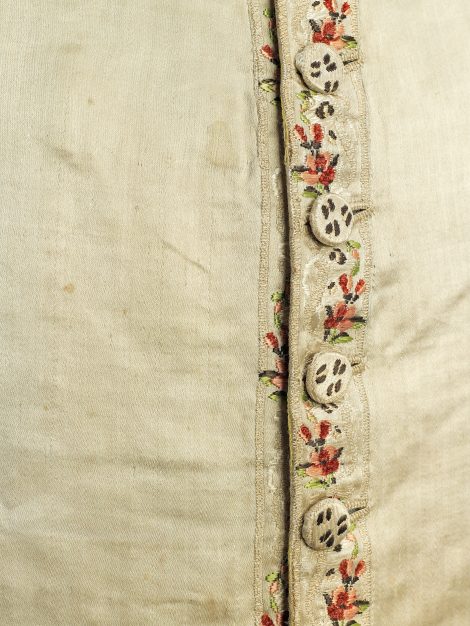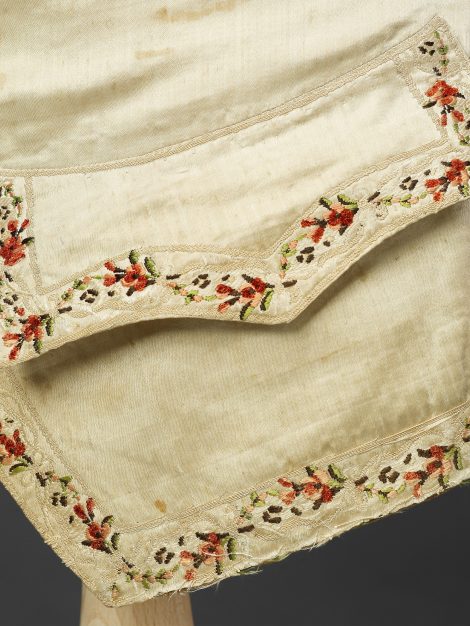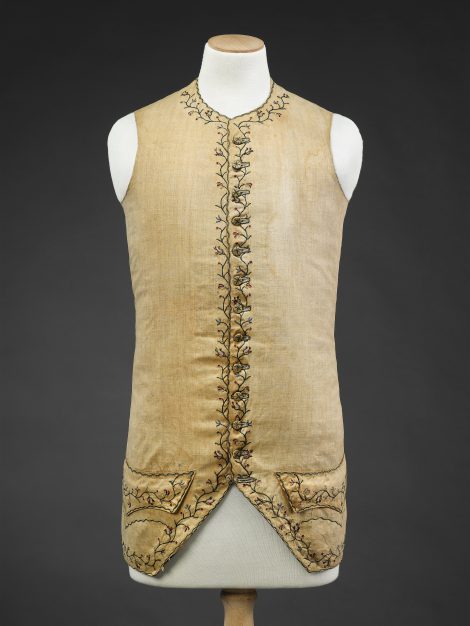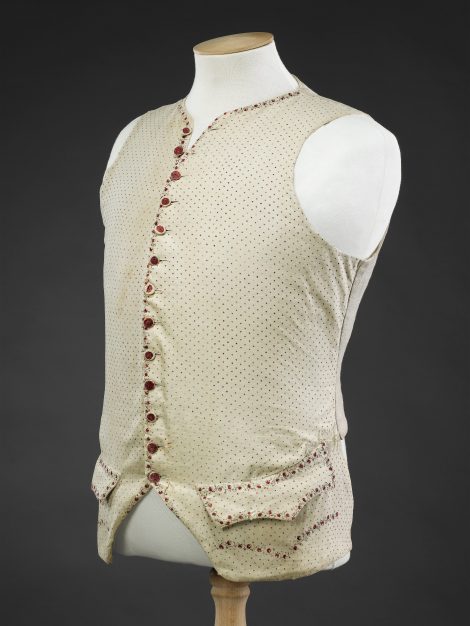Although many 18th Century waistcoats worn by the affluent on formal occasions were magnificently decorated with metallic braids, extensive areas of embroidery, or were made from rich, expensive silks, most were far more restrained, especially as the century progressed. They could be trimmed to match the coat of a suit, or were unrelated to it – appropriate for wear with a number of garments. This trimming tended to be focused upon, or limited to, the borders of the front fastening, the hem and the pocket flaps, and was ready-worked onto the shapes of the waistcoat fronts, together with button roundels, marked out on a length of fabric. Purchased from a mercer, the customer took this length to his tailor to be made up to his measurements. As coats were generally not removed in public, the unseen waistcoat backs were of plainer, less expensive materials such as linen.
This waistcoat, and those seen as Related Items, represent some of the different forms of decoration employed. All date from the 1770s to 1780s, and in comparison to earlier examples have become shorter and cut away diagonally at the base of the front fastening. Made of cream satin, its borders simulate a decorative braid. Woven to accommodate the angles and shaping of the waistcoat pieces, the sometimes bulky folding and mitring necessary with applied braids were avoided. The formulaic nature of the colours and shapes of the small non-naturalistic flowers and foliage is also characteristic of women’s woven silks of the period.
The waistcoat is lined with cotton and silk twills; the cotton back has been split down the centre at a later date, but remains of pairs of tapes are visible.
